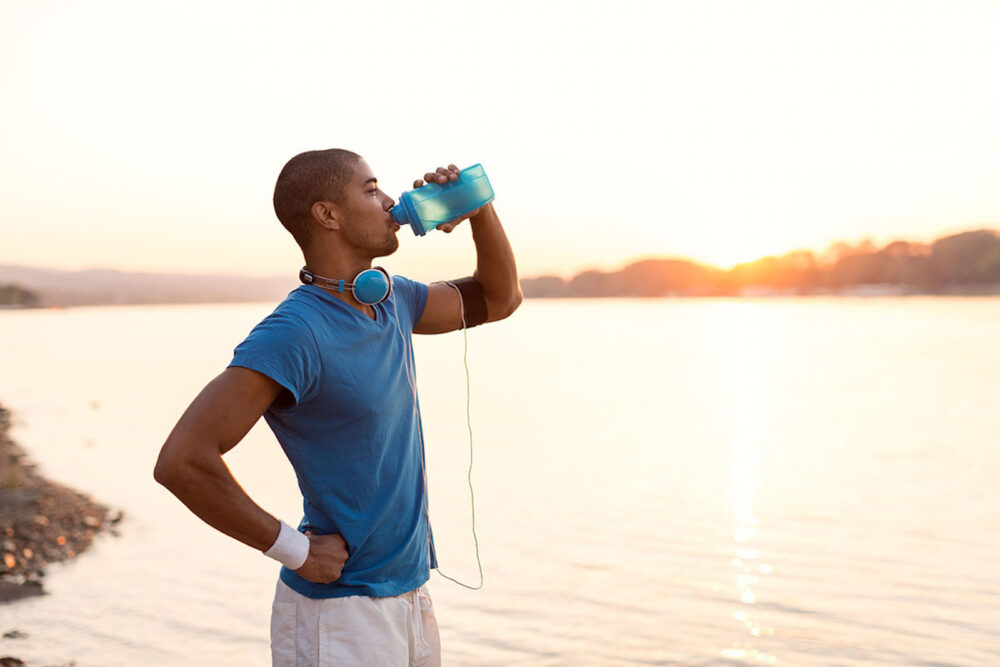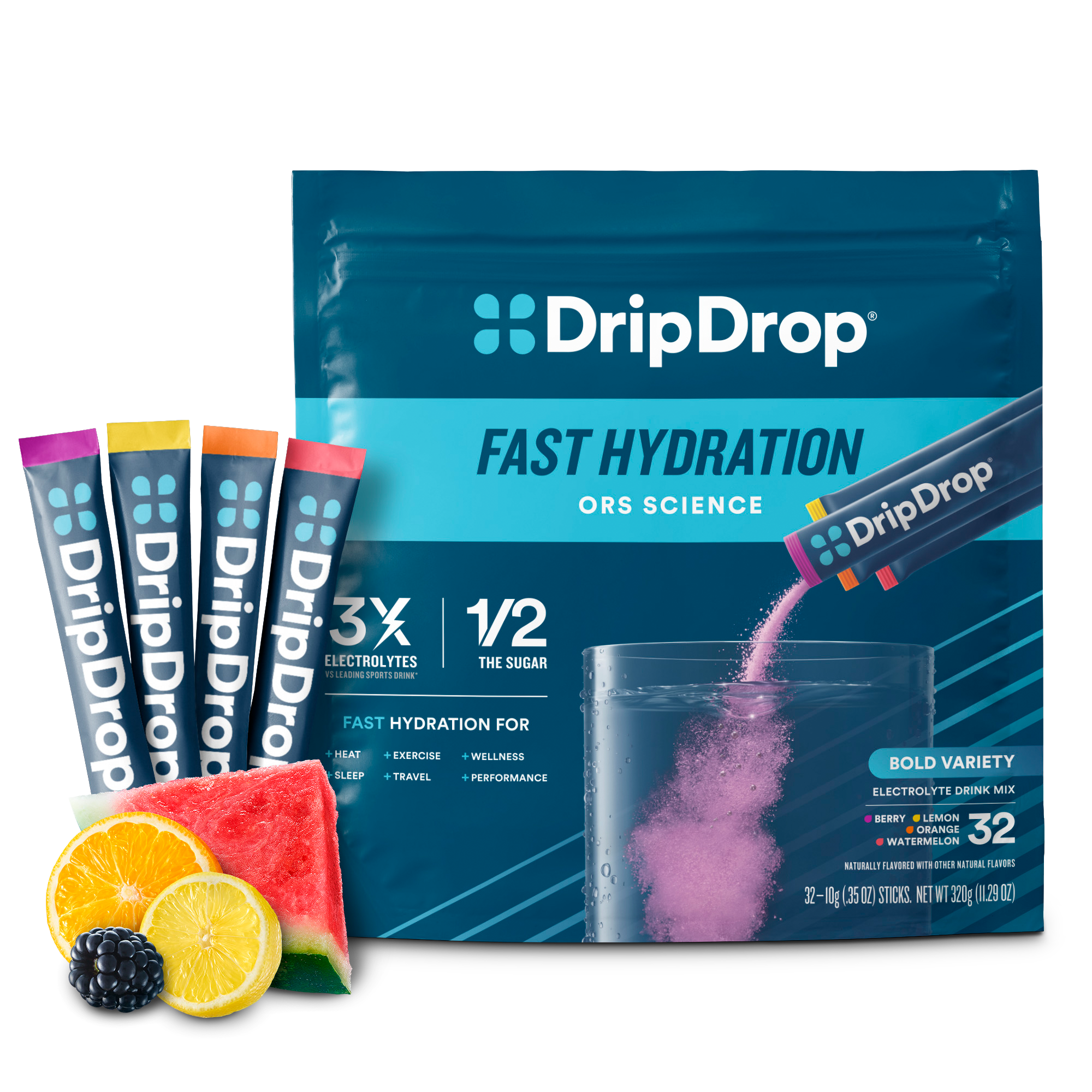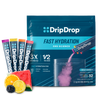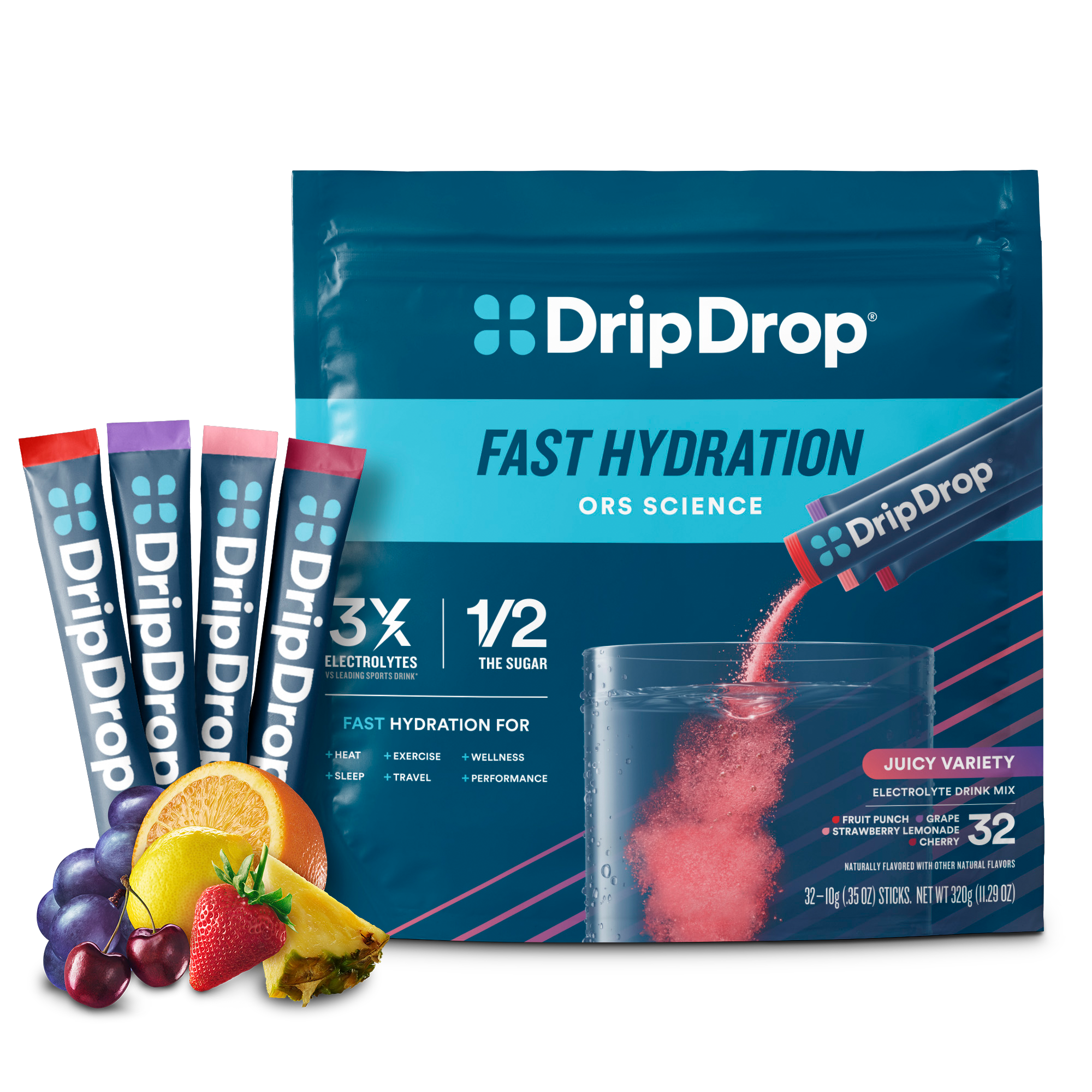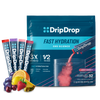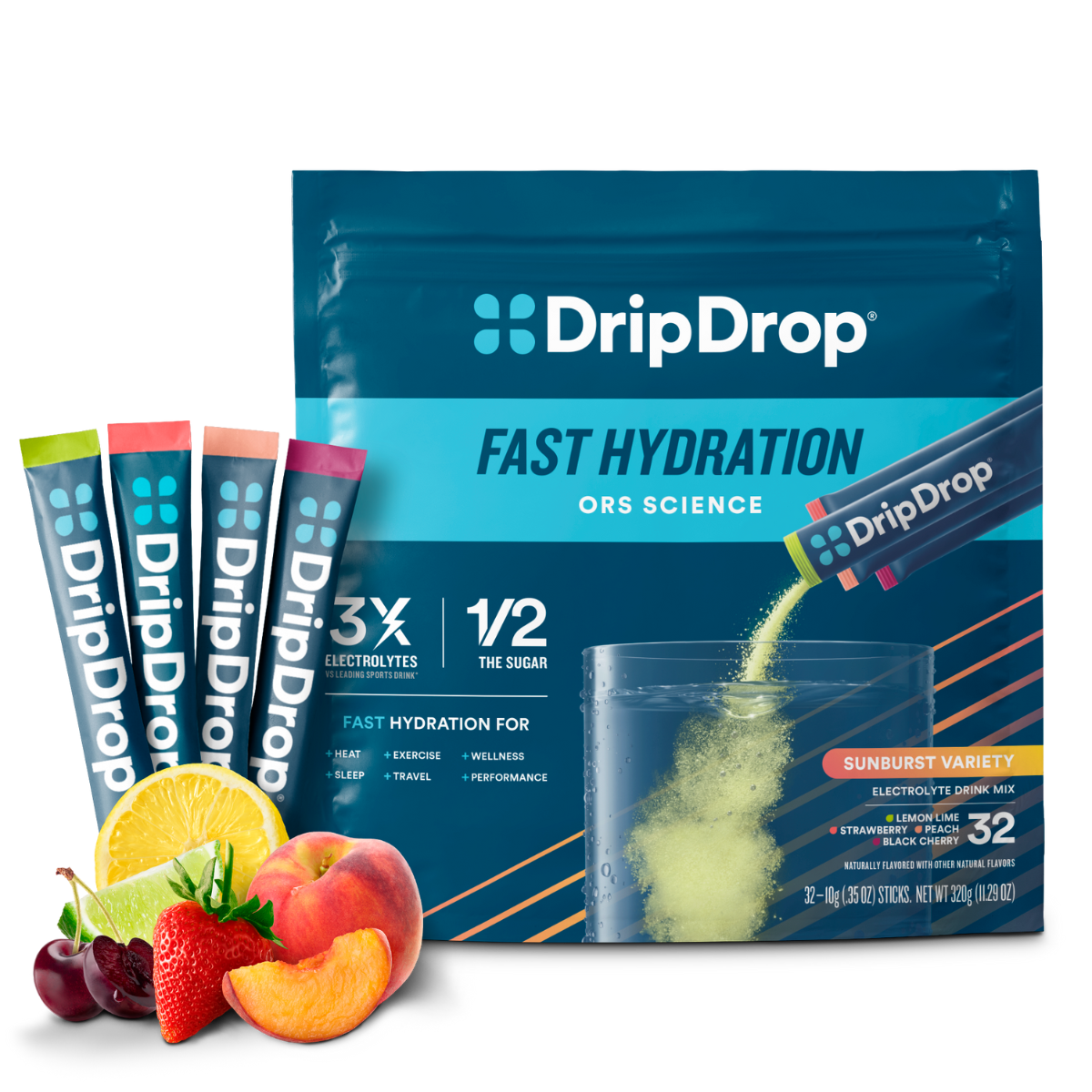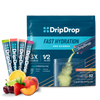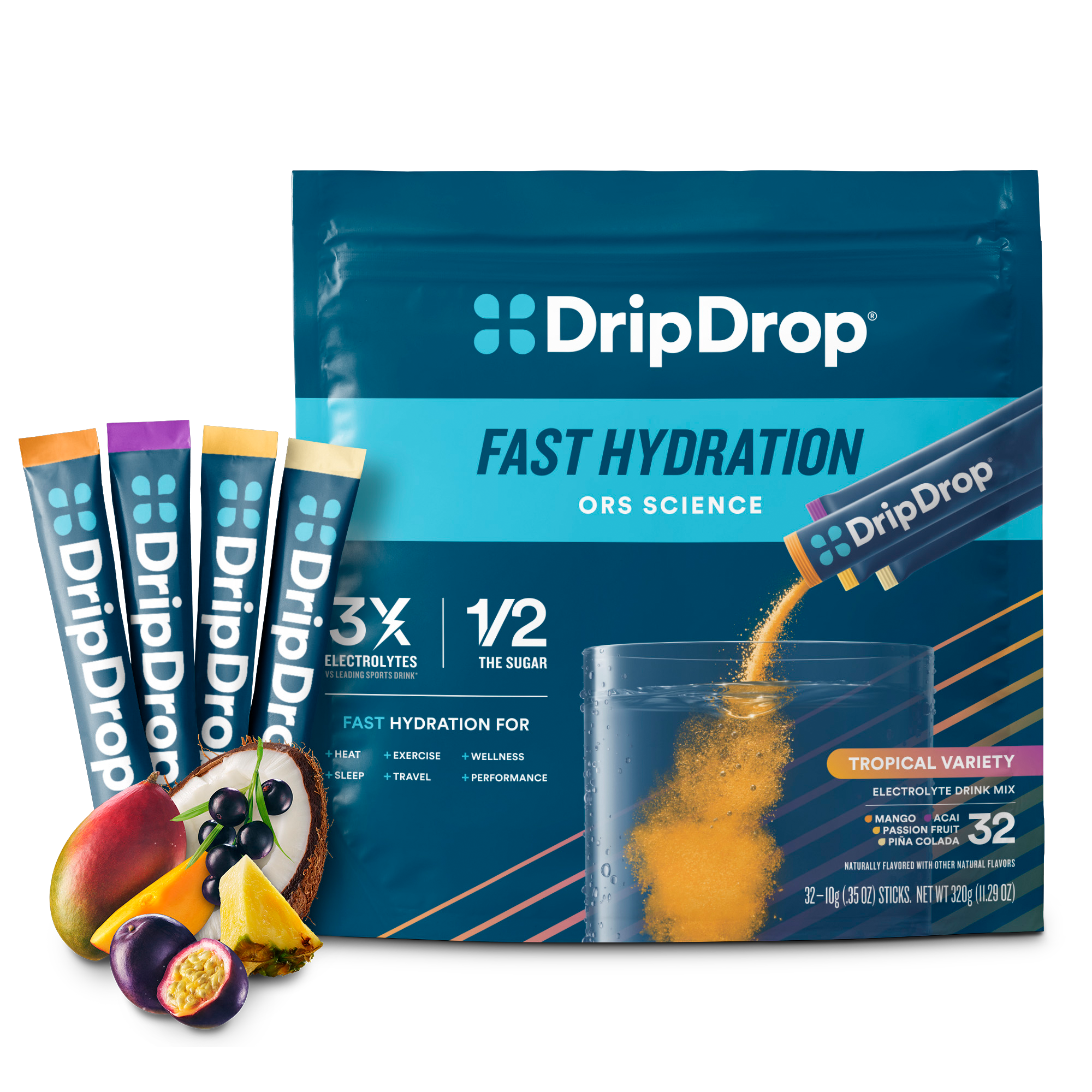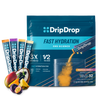Have you ever noticed that water tastes different when it comes from different sources? Whether sipping the tap water at your home or drinking from a natural spring during a hike, what’s in your water impacts flavor and health benefits.
People assume all water is the same, but there are actually different kinds of drinking water, including spring, tap, and artesian water. But when it comes to hydration, plain water alone isn’t enough. Electrolytes play a vital role in supporting essential bodily functions—from muscle contraction to fluid balance. Alternative options, such as electrolyte drinks like DripDrop, provide your body with the precise amount of electrolytes and water to hydrate you fast.
Let’s explore the different types of drinking water to learn why they taste different and which water is best for hydration.
What Impacts Water’s Taste?
Various factors impact water’s taste, including minerals, treatment chemicals, pH, and environmental factors. Naturally occurring minerals such as calcium and magnesium can add a slightly smooth or bitter taste.
Tap water is treated with chemicals like chlorine and fluoride to kill bacteria and reduce tooth decay, but these additives can leave behind a minor aftertaste. If you’ve ever drank tap water in two different parts of the country, you’ve likely noticed that they taste different because of the way the local treatment centers purify the drinking water.
The geology and environment in which the water originated can impact flavor as well as the pipes it travels through. Though water may seem neutral, different types of drinking water have different pH levels. Alkaline water has a low pH and tastes smoother than more acidic water.
7 Types of Drinking Water
There are several different kinds of drinking water, from treated tap water to mineral-rich options. Some types are healthier than others, but the best water for hydration is low or zero-sugar electrolyte drinks packed with essential minerals.
Here’s a guide to some of the most common types of drinking water:
1. Electrolyte Water
Plain drinking water contains no electrolytes despite the fact that minerals and vitamins such as calcium, magnesium, and potassium, are essential to muscle, brain, and nerve function as well as fluid regulation. Without the proper levels of electrolytes, you can experience an electrolyte imbalance, which leads to symptoms including muscle cramps, headaches, fatigue, and more.
Electrolyte water contains added minerals necessary to bodily functions and overcoming dehydration. DripDrop is an electrolyte drink with the precise ratio of sodium to glucose that allows your body to absorb water and electrolytes more quickly. It also includes magnesium, zinc, and vitamin C to hydrate you fast and support your health.
2. Tap Water
Treatment centers filter tap water to remove harmful pathogens, nitrates, and contaminants like pesticides and heavy metals. A piping system then delivers the filtered water to your home via your faucet. Most countries have their own water quality treatment guidelines for filtration systems and disinfection processes.
While generally safer than many other drinking water sources, tap water can have a chemical taste because chlorine is used to disinfect the water. Unfortunately, many minerals are also removed during the filtration process, so plain tap water doesn’t contain many electrolytes necessary for overall health.
3. Artesian Water
Artesian water originates from aquifers located deeper than traditional groundwater or well water, usually in rocky areas. Artesian water has a high mineral content and is rich in fluoride and sodium bicarbonate — two minerals that support dental and bone health.
While this kind of drinking water has larger amounts of minerals, the type and amount of minerals varies greatly depending on the source of the water. In many cases, artesian water doesn’t have the right balance of electrolytes your body needs to properly hydrate.
4. Alkaline Water
In general, the pH of drinking water is neutral, but alkaline water has a higher pH level — generally between 8 and 9.5. This kind of water has been approved in Japan for medical use, particularly for gastrointestinal diseases. While it’s marketed heavily as a healthier alternative to traditional drinking water, most studies show mixed results.
Though you may enjoy the taste of alkaline water, it had a low mineral content. Adding electrolytes to your favorite drinking water is the best way to hydrate fast.
5. Spring Water
Spring water, which comes out of the ground from a spring, is also known as natural mineral water. It is not processed as heavily as tap water and does not contain additives like chlorine, used to treat local water sources.
In the U.S., spring water is regulated by the Food and Drug Administration and must contain more than 250 parts per million total dissolved solids. Total dissolved solids are anything other than H2O molecules — they usually include salts and minerals. This type of water tends to have higher amounts of minerals, including calcium, potassium, and magnesium.
6. Distilled Water
Distilled water is disinfected by boiling it, then capturing and condensing the steam back into a liquid form to be repackaged. Contaminants tend to be heavier than water and have a higher boiling point, so once boiled, the impurities are left behind and the water molecules can be recaptured.
7. Purified Water
Purified and distilled water are similar in purity, but purified water is decontaminated in a different manner. Ground or tap water is filtered through activated carbon, physical filters, or reverse osmosis to remove potential contaminants. Much like other plain drinking water, purified water is safe to consume and fine to drink, but if you are trying to overcome dehydration, it does not provide the necessary electrolytes your body needs.
The Best Water to Drink for Hydration
While some waters have magnesium and potassium, the amounts can vary dramatically. Some spring and artesian water sources have large amounts of potassium, while others may have very little potassium and larger amounts of other minerals. The composition of the spring water depends on the surrounding rock and environment.
Your body needs a precise balance of electrolytes, including sodium, chloride, and potassium, and the best way to hydrate while getting the electrolytes you need is with an electrolyte drink. DripDrop’s precise formula is designed to deliver the necessary electrolytes while making use of a hydration shortcut, making it the best choice to hydrate fast.

